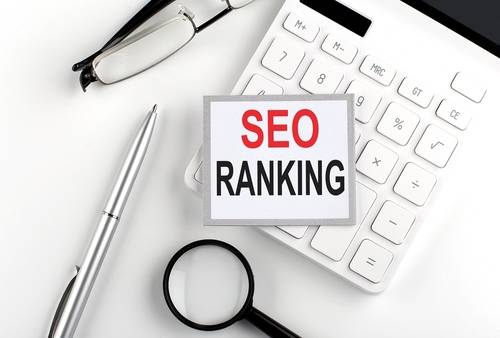Google, the search engine, was the past, is present, and will be the future of the technology advancements. Google is the first thing that comes to mind when you think of exploring or searching for anything new.
There are examples of numerous businesses that have rocketed due to the great Google business establishment. Having a presence on the platform is mandatory for all businesses.
In this impression-driven competitive world, people focus more on the ranking system provided by Google.
The products, services, and capital are secondary factors to study while finding the correct choice. Instead, people prioritize their choices by the ranking Google provides.
Apart from sponsored websites that appear first on your web engine, numerous factors determine your business’s position on the ranking list.
This tool, which typically decides your position concerning others in the chart, is known as SEO, i.e., Search engine optimization.
It is a group of methods designed to improve the positioning and visibility of web pages in organic search results. Since organic search holds the largest share of users online, it is now essential to focus and consider the parameters that decide the ranking of your business or webpage.
But How does This Work?
Have you ever heard of crawlers? No? They might have heard of bots or spiders. Yes? Then, there might be in your device, too. Google and Bing use these to accumulate information on all the topics online. A popular web page serves as the starting point, and the crawler follows internal and external links to pages on that site. Thanks to the content on those pages and the context of the connections it follows, the crawler can understand what each website is about and how it is semantically connected to all the other pages in the search engine’s extensive database, termed an index.
When you type or speak a query into the search box, the search engine revises the data accumulated by these bots and spiders and presents you with the “most accurate” data it has discovered or arranged in due course of time. The data is a mixture of output like photos, texts, local businesses, etc.
This typical algorithm considers several variables that change over time and by the device’s capabilities used to search.
Let us take a quick look at the Top 11 factors that determine the ranking of your Google business.
Premium-quality Content
Google gives the caliber of your content particular consideration. No matter how well-optimized your website is, you can’t expect higher rankings if your content isn’t worthwhile. Three criteria—originality, uniqueness, and value—are the primary criteria used to evaluate material.
Google prioritizes genuine material. You want to design websites that meet the demands of your audience, offer something new, and are original.
The more original, authentic content you produce, the better it is for your website’s SEO. Google might not want a website with too much-copied material.
Also, if you frequently publish duplicate content, Google may decrease the frequency at which it crawls your page.
The Fresh, the Better
Search engines receive favorable ranking signals when you often update posts and add new content.
If you cover subjects that involve current events or popular culture, content freshness is even more critical. Google favors pages that offer the most recent information on such subjects.
For instance, you should post content that includes the latest news and research if you’re writing about a worldwide health crisis. Using Google Trends is a quick and easy approach to discover the most recent information to keep your material interesting.
Mobile-First Optimization
Mobile traffic made up 54.4 percent of all traffic in the latter three months of 2021. Most smartphone users browsing the web want your site to function flawlessly on their device; if it doesn’t, they’ll probably leave it.
Mobile-friendliness is one of the most crucial Google ranking variables. If your website doesn’t work correctly on mobile devices, Google is putting you down a notch.
Limit the quantity of “lazy-load” content on your site and reduce the number of URL changes for videos to ensure that the site loads correctly.
Links (backlinks)
Backlinks are the other most important Google ranking factor after article quality. Incoming connections from other websites greatly influence Google’s ranking algorithm.
Because they are buried deep in the search results, websites with fewer backlinks receive far less organic traffic.
Backlinks, also known as inbound links, act as a kind of endorsement for your website. Google evaluates the value of your links and compares those votes.
In general, backlinks from highly authoritative websites are more important and will improve your ranks than those with lower ratings. Getting these links informs Google that your material is reliable because other reputable websites back it up.
On-Page Experience
One Google ranking criteria that significantly impacts where Google places you in search results is bounce rate. According to one study, the typical bounce rate is roughly 49%. Most people think a bounce rate of 50 to 60 percent is adequate. Your page is less likely to show up in search results if your bounce rate falls much below that level since Google will assume that your website doesn’t provide users with the information they’re looking for.
Dwell time is another crucial aspect of the on-page experience that affects Google rankings. When someone clicks on your website from the search results for their search query, they let Google know whether they like what they see.
Authentic Business Information
Arguably, consider this Google ranking element relatively new; it belongs to the category of trust signals. You must adapt the in-store experience for your website as more and more consumers rely on the internet for almost everything.
Why does this matter? This information gives a favorable and trustworthy image to your site and Google. Getting feedback on helping in reality is what Google wants. People who visit your page might want to call you and know where you are situated, and being able to do so is beneficial for the public image of the platform.
Buffering Speed
Google takes care of the visitors and prefers sites that also appreciate the fall-ins it gets and make the visitor’s experience hustle-free.
Google views indicators such as website speed as necessary for your site’s user experience. It evaluates your website’s responsiveness and general speed and the loading times of various components like fonts and graphics.
This criterion is crucial because Google included webpage loading time in its Core Web Vitals in May 2021.
Domain Authority
The SEO firm Moz created domain authority, which assigns a number between 1 and 100. Your chances of ranking on Google for terms associated with your areas of expertise increase with your domain authority.
Of course, there are various techniques to increase your website’s authority. Getting high-quality backlinks is one option. Yet, having a large number of backlinks does not ensure better rankings. Because of this, you must provide outstanding content that is relevant to your sector or significant subject. Also, attempt to concentrate the content on your blog and website around a single essential subject.
Keyword Optimization
The search terms that users enter into search engines should match the keywords. Hence, it’s crucial that your web pages include the terms your audience uses to search, as well as checking their search intent, and that you keep an eye on your keyword rankings. Google can then display your page in its search results in this manner.
Here are a few elements to focus on to make sure your website is keyword optimized: Anchor text, Image Alt Text, Meta Description, and Title Tags; prevent keyword stuffing by using keywords in the URL
Safety and Security
The security of your website is now a significant Google ranking criterion, along with site architecture. Ensuring your website uses the HTTPS protocol, which encrypts the data sent between it and a user’s browser, is one of the most important criteria.
Google acknowledged HTTPS as a ranking indicator in 2014. Therefore, now would be an excellent time to upgrade if your website doesn’t have an SSL certificate and is still utilizing http://… in its URL
Mobile Friendliness
Together with security, your website should also be tested to see how well it works on smaller screens.
When Google began prioritizing mobile search in 2019, your website must be adaptable to any size screen. Google now indexes and ranks websites based on their mobile versions, a practice known as mobile-first indexing and ranking. Your website was previously indexed by Google using the desktop version. Because there are over 4.2 billion mobile internet users globally, it is unsurprising that Google made this modification.
So, your website must be mobile-friendly to maximize your rankings. It’s a good idea to start with a mobile-responsive WordPress theme. Instead, use plugins to make your WordPress website more mobile-friendly.
Conclusion
Taking care of all the above criteria is the key to getting highlighted in the ranking system. Understanding the algorithms could be too much for someone with a non-technical background. Hiring an expert during such a situation might help your business reach heights. Using the available resources to the best is the most innovative solution to level up your business.





